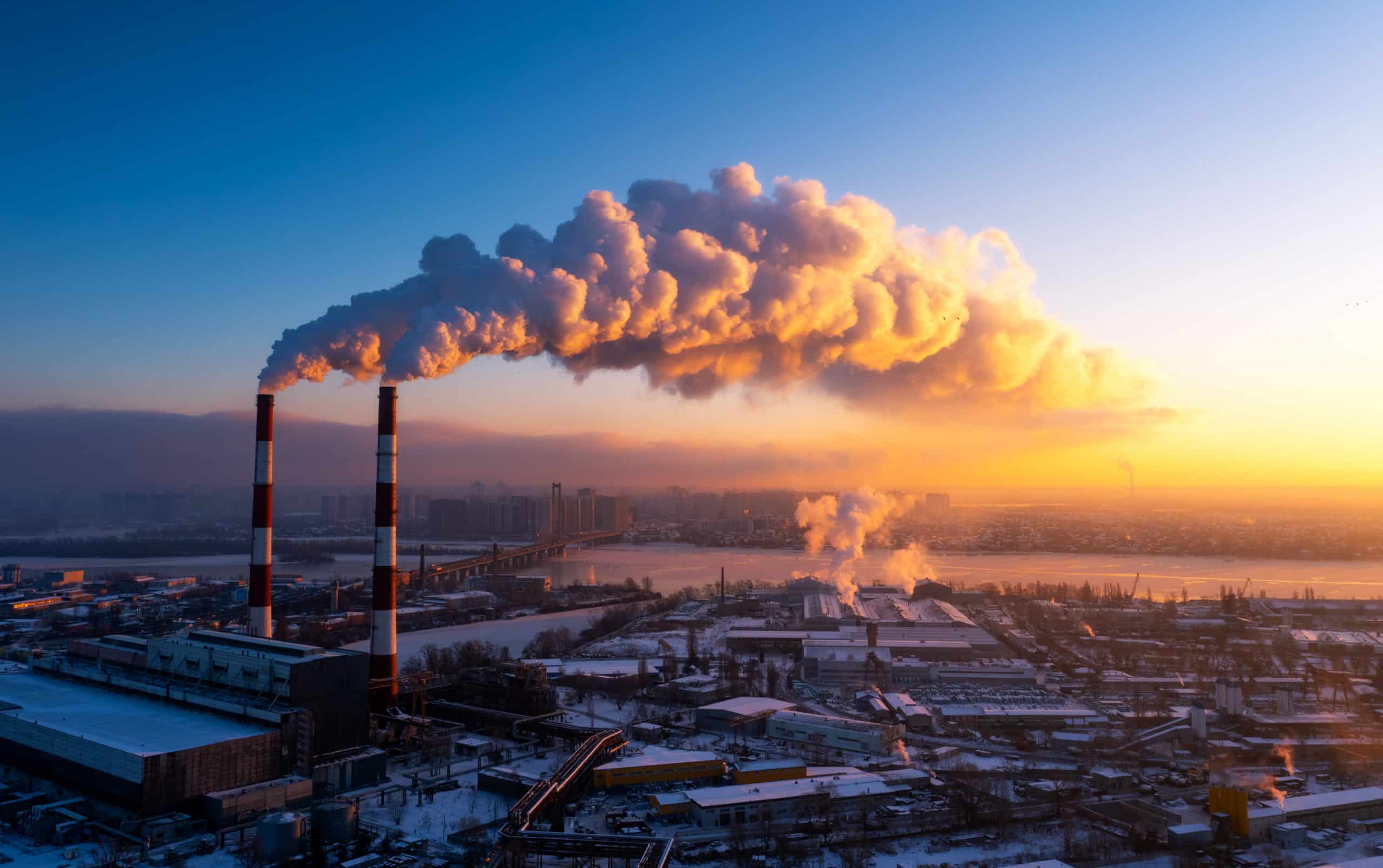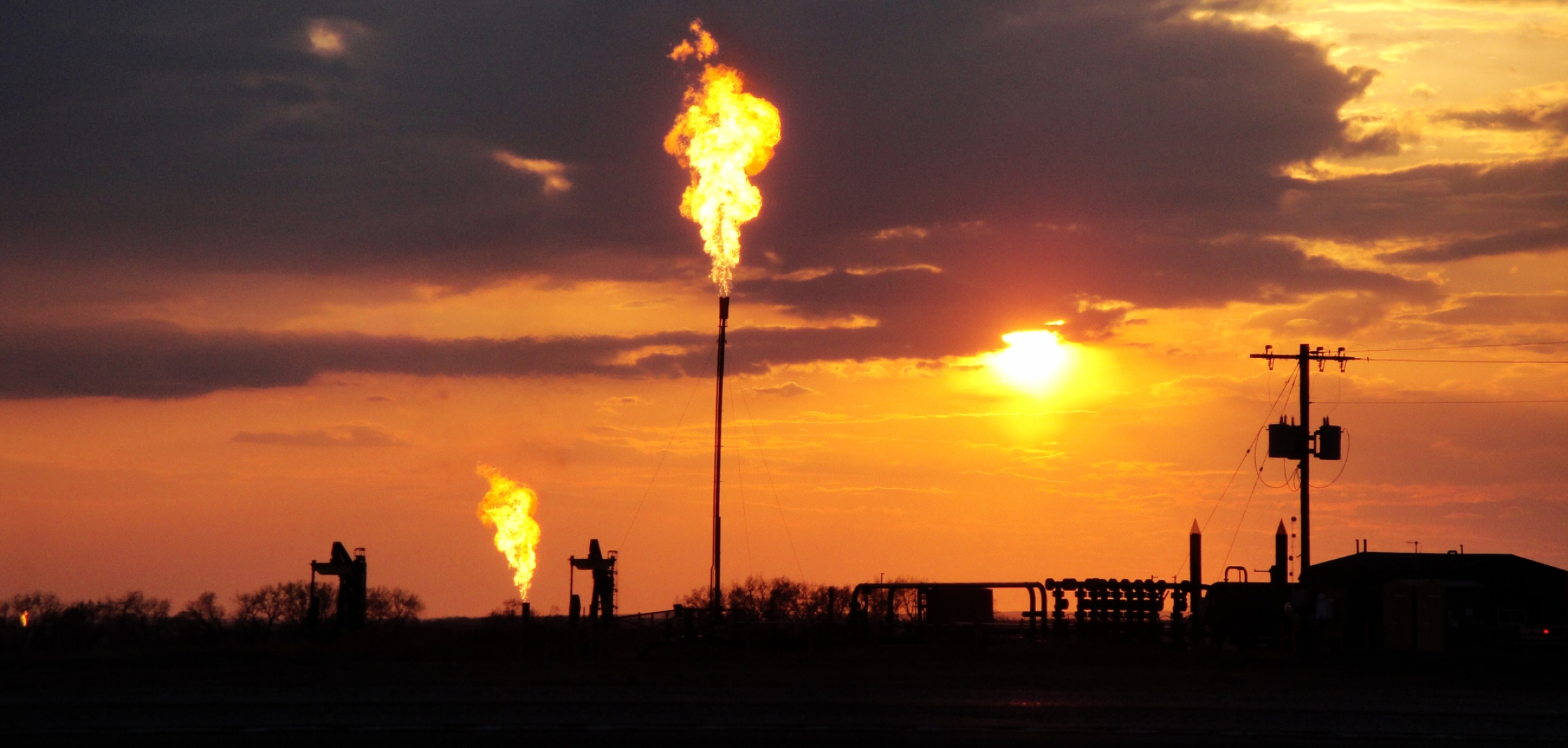Home>Gardening News and Trends>How Do Greenhouse Gases Warm The Earth’s Surface And Lower Atmosphere


Gardening News and Trends
How Do Greenhouse Gases Warm The Earth’s Surface And Lower Atmosphere
Modified: January 22, 2024
Discover the latest news on how greenhouse gases contribute to the warming of the Earth's surface and lower atmosphere. Explore the mechanisms behind this process and its impact on our climate.
(Many of the links in this article redirect to a specific reviewed product. Your purchase of these products through affiliate links helps to generate commission for Chicagolandgardening.com, at no extra cost. Learn more)
Table of Contents
Introduction
Welcome to the fascinating world of greenhouse gases and their role in warming the Earth’s surface and lower atmosphere. In recent years, discussions about climate change and global warming have become increasingly prevalent. At the heart of these discussions are greenhouse gases, which play a critical role in regulating the temperature of our planet. Understanding how these gases work and the effects they have is essential for comprehending the challenges we face in the context of climate change.
Greenhouse gases are a group of atmospheric gases that trap heat from the sun, preventing it from escaping back into space. This natural process, known as the greenhouse effect, is crucial for maintaining a stable climate on Earth. Without it, our planet would be too cold to support life as we know it.
However, in recent decades, human activities have led to a significant increase in greenhouse gas emissions, primarily through the burning of fossil fuels and deforestation. As a result, the concentration of these gases in the atmosphere has risen to unprecedented levels, leading to an enhancement of the greenhouse effect. This phenomenon, known as the enhanced greenhouse effect, is causing the Earth’s surface and lower atmosphere to warm at an alarming rate.
The purpose of this article is to explore the mechanisms behind greenhouse gas warming and its implications for our planet. We will delve into the processes by which greenhouse gases absorb infrared radiation, the concept of radiative forcing, and the relationship between greenhouse gas concentrations and global warming. Furthermore, we will discuss feedback mechanisms and the potential impacts of continued greenhouse gas warming.
Through this exploration, we hope to provide a comprehensive understanding of the role of greenhouse gases in climate change and highlight the need for action to mitigate the adverse effects of this warming trend. So, let us embark on this journey to unravel the mysteries of greenhouse gases and their impact on the Earth’s surface and lower atmosphere.
Overview of Greenhouse Gases
Greenhouse gases are atmospheric gases that have the ability to trap and retain heat energy from the sun. These gases contribute to the natural greenhouse effect, which is essential for maintaining the Earth’s temperature at a habitable level. The most common greenhouse gases include carbon dioxide (CO2), methane (CH4), nitrous oxide (N2O), and fluorinated gases.
Carbon dioxide is the primary greenhouse gas emitted by human activities, mainly through the burning of fossil fuels such as coal, oil, and natural gas. It is also released through deforestation and land-use changes. Methane, on the other hand, is produced from various sources, including the decomposition of organic matter in landfills and agricultural activities. Nitrous oxide is mainly generated by agricultural and industrial activities, as well as the combustion of fossil fuels. Fluorinated gases, which include hydrofluorocarbons (HFCs) and sulfur hexafluoride (SF6), are synthetic gases used in various industrial applications.
These greenhouse gases have different lifetimes in the atmosphere, ranging from a few years to several centuries. The longer a gas remains in the atmosphere, the more it can contribute to the greenhouse effect over time. Carbon dioxide, for example, has a long lifespan and can remain in the atmosphere for hundreds to thousands of years, leading to a cumulative effect on global warming.
It is important to note that the potency of greenhouse gases in trapping heat varies. This is measured in terms of their global warming potential (GWP). Carbon dioxide has a GWP of 1 and serves as the baseline for comparing other greenhouse gases. Methane has a much higher GWP, approximately 28-36 times more potent than carbon dioxide over a 100-year timeframe. Nitrous oxide is even more potent, with a GWP of about 265-298 times that of carbon dioxide. Fluorinated gases have extremely high GWPs, ranging from hundreds to thousands of times greater than carbon dioxide.
When these greenhouse gases accumulate in the atmosphere, they create a “blanket” that traps heat. This trapped heat leads to the warming of the Earth’s surface and lower atmosphere, resulting in the phenomenon commonly referred to as global warming.
Now that we have a general understanding of the different types of greenhouse gases and how they contribute to global warming, let’s dive deeper into the mechanisms behind the greenhouse effect and how these gases warm the Earth’s surface and lower atmosphere.
The Greenhouse Effect
The greenhouse effect is a natural process that regulates the temperature of the Earth. Without this effect, our planet would be inhospitably cold, with an average surface temperature of around -18°C (0°F). The greenhouse effect is caused by a group of gases known as greenhouse gases, which include water vapor, carbon dioxide, methane, nitrous oxide, and fluorinated gases.
Here’s how the greenhouse effect works: When the sun’s energy reaches the Earth, some of it is absorbed by the surface and warms the planet. As the surface heats up, it emits infrared radiation, which is a form of heat energy. Greenhouse gases in the atmosphere then absorb a portion of this infrared radiation and re-emit it in all directions, including back towards the Earth’s surface.
This process of trapping and re-emitting heat by greenhouse gases is crucial for maintaining a stable climate. It keeps the Earth warm enough to sustain life as we know it. However, human activities have significantly increased the concentration of greenhouse gases in the atmosphere, resulting in an enhanced greenhouse effect.
The greenhouse effect can be likened to a blanket that covers the Earth. Just as a blanket traps heat from our bodies, greenhouse gases trap heat from the sun, preventing it from escaping back into space. This leads to an increase in temperature at the Earth’s surface and lower atmosphere.
Water vapor is the most abundant greenhouse gas and plays a critical role in the natural greenhouse effect. It is responsible for about two-thirds of the Earth’s natural greenhouse effect. Carbon dioxide is the second most important greenhouse gas and is primarily emitted through human activities, particularly the burning of fossil fuels. Methane and nitrous oxide, although present in much smaller concentrations, are more potent than carbon dioxide in trapping heat.
It is important to note that while greenhouse gases contribute to keeping the Earth warm, an excessive buildup of these gases can lead to a rise in global temperatures, causing climate change. The increased concentration of greenhouse gases due to human activities has led to a disruption in the delicate balance of the Earth’s climate system, resulting in the ongoing rise in global temperatures.
In the next section, we will delve into how greenhouse gases absorb infrared radiation and the mechanisms by which they contribute to the warming of the Earth’s surface and lower atmosphere.
Mechanisms of Greenhouse Gas Warming
The warming effect of greenhouse gases occurs through several mechanisms, all of which contribute to trapping heat in the Earth’s atmosphere. Understanding these mechanisms is crucial for comprehending the impact of greenhouse gases on our climate system. Let’s explore these mechanisms in more detail.
One of the key mechanisms through which greenhouse gases warm the Earth is by absorbing infrared radiation. When greenhouse gases encounter infrared radiation emitted from the Earth’s surface, they absorb a portion of this energy. This absorption process excites the molecules of the gases, causing them to vibrate and gain kinetic energy. As a result, the temperature of the gases increases, leading to the warming of the surrounding atmosphere.
Not all wavelengths of radiation are absorbed by greenhouse gases equally. Each gas has specific absorption bands, which are wavelengths at which the gas is most effective at absorbing energy. For example, carbon dioxide is particularly efficient in absorbing long-wavelength infrared radiation, while methane and nitrous oxide have absorption bands that overlap with carbon dioxide.
In addition to absorbing radiation, greenhouse gases also contribute to the warming effect through a process called radiative forcing. Radiative forcing refers to the difference between the amount of solar energy absorbed by the Earth and the amount of infrared radiation emitted back into space. When greenhouse gases trap more heat energy than is radiated back into space, it results in a positive radiative forcing, causing a net gain of heat and leading to a warming effect on the Earth.
Enhanced greenhouse gas concentrations have led to an increase in radiative forcing, which has a significant impact on the Earth’s energy balance. This positive radiative forcing is driving the current trend of global warming and climate change.
It is important to note that the warming effect of greenhouse gases operates hand in hand with feedback mechanisms. These feedback mechanisms can either amplify or dampen the initial warming caused by greenhouse gases. For example, as the Earth’s temperature rises, the ability of the atmosphere to hold water vapor increases, which in turn leads to an increase in water vapor—a potent greenhouse gas. This positive feedback loop enhances the greenhouse effect and contributes to further warming.
On the other hand, certain feedback mechanisms can act as dampeners on the warming effect. For instance, as temperatures rise, clouds form and reflect more sunlight back into space, thereby reducing the amount of solar energy absorbed by the Earth’s surface.
In the following section, we will explore the relationship between greenhouse gas concentrations and global warming and delve into the potential impacts of continued greenhouse gas warming.
Absorption of Infrared Radiation
The absorption of infrared radiation by greenhouse gases is a critical mechanism through which they contribute to the warming of the Earth’s surface and lower atmosphere. When infrared radiation, also known as heat energy, is emitted from the Earth’s surface, greenhouse gases in the atmosphere absorb a portion of this energy.
The ability of greenhouse gases to absorb infrared radiation is determined by their molecular structure. Carbon dioxide (CO2), for example, has a linear structure that allows it to absorb infrared radiation in specific wavelengths, known as absorption bands. Methane (CH4) and nitrous oxide (N2O) also have unique molecular structures that enable them to absorb infrared radiation in different bands.
It’s crucial to note that not all wavelengths of infrared radiation are absorbed equally by greenhouse gases. Each gas has specific absorption bands in which it is most effective at absorbing energy. These absorption bands can overlap with each other, amplifying the overall warming effect.
Water vapor (H2O) is another important greenhouse gas that plays a significant role in the absorption of infrared radiation. Being highly abundant in the Earth’s atmosphere, water vapor is responsible for the majority of the Earth’s natural greenhouse effect. It is highly effective at absorbing a wide range of wavelengths of infrared radiation, including some that are not absorbed by other greenhouse gases.
When greenhouse gases absorb infrared radiation, the energy is converted into vibrational energy. This excites the molecules of the gases, causing them to vibrate and gain kinetic energy. As a result, the temperature of the atmosphere increases, leading to the warming of the Earth’s surface and lower atmosphere.
While the absorption of infrared radiation by greenhouse gases is a natural process that helps regulate the Earth’s temperature, human activities have significantly increased the concentration of these gases in the atmosphere. The burning of fossil fuels, deforestation, and industrial processes have led to a considerable rise in carbon dioxide levels, amplifying the greenhouse effect and contributing to global warming.
It is worth mentioning that the amount of infrared radiation absorbed by greenhouse gases depends on their concentration in the atmosphere. The more greenhouse gases there are, the more radiation they can absorb and trap. This is why the increasing concentration of greenhouse gases, primarily carbon dioxide, has a significant impact on Earth’s climate.
In the next section, we will dive deeper into the concept of radiative forcing and how it relates to the greenhouse effect and global warming.
Radiative Forcing
Radiative forcing is a concept that helps us understand the energy balance of the Earth’s climate system. It refers to the difference between the amount of solar energy absorbed by the Earth and the amount of energy radiated back into space. Positive radiative forcing occurs when there is a net gain of heat energy, contributing to a warming effect, while negative radiative forcing leads to a net loss of heat energy, resulting in a cooling effect.
Greenhouse gases play a crucial role in radiative forcing. When greenhouse gases absorb and re-emit infrared radiation, they act as a barrier, trapping the heat within the Earth’s atmosphere. This trapped heat increases the energy input into the climate system, resulting in a positive radiative forcing.
The greenhouse effect caused by the accumulation of greenhouse gases, particularly carbon dioxide, has led to a significant positive radiative forcing. This means that more heat energy is being retained and trapped in the Earth’s system, contributing to the rise in global temperatures.
The concept of radiative forcing helps us assess the relative contributions of different factors to climate change. It allows us to quantify the impact of individual components on the Earth’s energy balance. For example, radiative forcing calculations can determine the effect of changes in greenhouse gas concentrations, solar radiation, volcanic activity, and aerosols on the Earth’s climate.
It is important to note that radiative forcing is not uniform across all regions of the Earth. Different geographical areas and climate zones can experience variations in radiative forcing, leading to regional differences in temperature trends and climate patterns.
When considering radiative forcing, it is essential to take into account the interactions and feedback mechanisms within the climate system. As greenhouse gases trap more heat energy, it can lead to temperature increases, which, in turn, can trigger secondary effects that either amplify or dampen the initial warming.
Positive feedback loops can exacerbate the warming process. For example, as temperatures rise, the ice caps and glaciers begin to melt, reducing their ability to reflect sunlight back into space. This reduction in surface reflectivity leads to further warming, as more solar energy is absorbed by the Earth’s surface.
On the other hand, negative feedback loops can help moderate the warming. For instance, increased evaporation due to higher temperatures can lead to the formation of clouds, which can reflect sunlight back into space, thereby offsetting some of the warming effects.
Understanding radiative forcing and its interactions with feedback mechanisms is crucial for predicting and mitigating the impacts of climate change. By quantifying the relative contributions of different factors to radiative forcing, scientists can develop strategies to reduce greenhouse gas emissions and minimize the warming effect on our planet.
In the next section, we will explore the concept of the enhanced greenhouse effect and the relationship between greenhouse gas concentrations and global warming.
Enhanced Greenhouse Effect
The enhanced greenhouse effect refers to the intensification of the natural greenhouse effect due to human activities, particularly the increased emission of greenhouse gases into the atmosphere. As we continue to burn fossil fuels, deforest large areas, and engage in industrial processes, the concentration of greenhouse gases in the atmosphere has risen to unprecedented levels, leading to a stronger trapping of heat and an imbalance in the Earth’s energy budget.
The primary driver of the enhanced greenhouse effect is the increased concentration of carbon dioxide (CO2) in the atmosphere. Carbon dioxide is released through the burning of fossil fuels, such as coal, oil, and gas, for energy production, transportation, and industrial processes. These activities have significantly raised atmospheric CO2 levels, from the pre-industrial era of around 280 parts per million (ppm) to over 410 ppm today.
This rise in carbon dioxide concentration amplifies the warming effect on the Earth’s surface and lower atmosphere. As more CO2 is present, it absorbs and re-emits more long-wave infrared radiation, trapping more heat in the atmosphere. This leads to the continued increase in global temperatures, commonly referred to as global warming.
In addition to carbon dioxide, other greenhouse gases, such as methane (CH4), nitrous oxide (N2O), and fluorinated gases, also contribute to the enhanced greenhouse effect. Methane is emitted from various sources, including agricultural activities, landfills, and the extraction and transport of fossil fuels. Nitrous oxide primarily arises from agricultural and industrial practices, as well as the combustion of fossil fuels.
The enhanced greenhouse effect has significant consequences for the Earth’s climate system. Rising temperatures can disrupt weather patterns, trigger more extreme weather events, and influence sea-level rise. It can also have profound impacts on ecosystems, habitats, and the distribution of species. Additionally, the increased warming can lead to the melting of polar ice caps and glaciers, resulting in the loss of freshwater resources and the inundation of coastal areas.
It is important to note that the enhanced greenhouse effect is not uniform across the globe. Different regions experience varying degrees of warming, with some areas experiencing more pronounced changes than others. These regional variations can have significant implications for local environments, economies, and communities.
Addressing the enhanced greenhouse effect requires collective action to reduce greenhouse gas emissions. Transitioning to sustainable energy sources, implementing energy-efficient technologies, promoting reforestation, and adopting climate-friendly practices are essential steps in mitigating the impact of the enhanced greenhouse effect and working towards a more sustainable future.
In the next section, we will delve into the relationship between greenhouse gas concentrations and global warming, highlighting the need for urgent action to combat climate change.
Greenhouse Gas Concentrations and Global Warming
The concentration of greenhouse gases in the Earth’s atmosphere has a direct impact on the magnitude of global warming. As human activities continue to release massive amounts of greenhouse gases into the air, the concentration of these gases has reached levels that are unprecedented in recent history. This rise in greenhouse gas concentrations is closely linked to the observed increase in global temperatures, known as global warming.
Carbon dioxide (CO2) is the most significant greenhouse gas contributing to global warming. The burning of fossil fuels such as coal, oil, and natural gas releases large quantities of CO2 into the atmosphere. Deforestation, which reduces the Earth’s capacity to absorb carbon dioxide through photosynthesis, also contributes to the increase in CO2 levels.
The concentration of CO2 in the atmosphere has risen by around 50% since the pre-industrial era, primarily due to human activities. This increase in CO2 levels is a key driver of global warming. Higher concentrations of CO2 lead to an enhanced greenhouse effect, trapping more heat energy and causing a rise in global temperatures.
In addition to carbon dioxide, the concentrations of other greenhouse gases, such as methane (CH4) and nitrous oxide (N2O), have also been increasing. Methane is released during the production and transport of coal, oil, and natural gas, as well as through agricultural activities and the decay of organic waste in landfills. Nitrous oxide is mainly emitted from agricultural and industrial activities.
The increasing concentrations of these greenhouse gases contribute to the overall warming of the Earth’s surface and lower atmosphere. Methane, in particular, is a potent greenhouse gas, with a global warming potential significantly higher than that of carbon dioxide over a 20-year timeframe.
The link between greenhouse gas concentrations and global warming is supported by scientific evidence and observations. Climate models have demonstrated that the observed increase in greenhouse gas concentrations aligns with the observed rise in global temperatures over the past century. These models project that if greenhouse gas emissions continue at current rates, global temperatures will continue to increase, exacerbating the already dire consequences of climate change.
The importance of curbing greenhouse gas emissions cannot be overstated. Efforts to limit the concentration of greenhouse gases in the atmosphere are crucial to mitigate global warming and its associated impacts. This includes transitioning to renewable energy sources, improving energy efficiency, adopting sustainable agricultural practices, and promoting carbon capture and storage technologies.
Addressing greenhouse gas concentrations and global warming requires global cooperation and immediate action. The international community, governments, industries, and individuals must work hand in hand to reduce greenhouse gas emissions, transition to a low-carbon economy, and adapt to the challenges posed by climate change.
In the next section, we will explore the feedback mechanisms associated with greenhouse gas warming and their implications for the Earth’s climate system.
Feedback Mechanisms
Feedback mechanisms are an essential component of the Earth’s climate system and play a significant role in amplifying or dampening the effects of greenhouse gas warming. These mechanisms can either reinforce the initial warming caused by greenhouse gases (positive feedback) or counteract it (negative feedback). Understanding feedback mechanisms is crucial for predicting and evaluating the impacts of climate change.
One well-known positive feedback mechanism is the ice-albedo feedback. As temperatures rise, ice caps, glaciers, and sea ice begin to melt, reducing the Earth’s surface reflectivity, known as albedo. Darker surfaces, such as open water or land without snow cover, absorb more solar radiation, leading to further heating and more ice melt. This positive feedback loop intensifies the initial warming caused by greenhouse gases and contributes to accelerated climate change.
Another positive feedback mechanism involves the increase in water vapor in the atmosphere. As temperatures rise, the capacity of the atmosphere to hold water vapor increases. Water vapor is a potent greenhouse gas, capable of trapping heat energy. A warmer atmosphere can hold more water vapor, leading to enhanced greenhouse effect and further warming. This positive feedback reinforces the initial warming caused by greenhouse gas emissions.
Cloud feedback, on the other hand, can act as a negative feedback mechanism. As temperatures rise, more water vapor evaporates into the atmosphere, increasing cloud formation. Clouds have both cooling and warming effects. They reflect sunlight back into space, reducing the amount of solar radiation that reaches the Earth’s surface, which has a cooling effect. However, clouds also absorb and emit infrared radiation, which contributes to the greenhouse effect and can lead to warming. The net effect of cloud feedback depends on the overall balance between these cooling and warming tendencies.
Other feedback mechanisms include changes in the carbon cycle. Warmer temperatures can accelerate the decomposition of organic matter, releasing more carbon dioxide and methane into the atmosphere. This additional release of greenhouse gases further enhances the greenhouse effect and contributes to global warming.
It is important to note that the interactions between these feedback mechanisms are complex and not fully understood. Scientists continue to study and refine climate models to better predict their impacts on the Earth’s climate system. Feedback mechanisms can amplify or dampen the effects of global warming, but their specific contributions are still an area of ongoing research.
Understanding and quantifying feedback mechanisms are crucial for accurate climate projections and effective climate change mitigation and adaptation strategies. By accounting for these mechanisms, scientists and policymakers can better assess the potential impacts of greenhouse gas warming and develop strategies to limit and mitigate their effects.
In the next section, we will discuss the potential impacts of greenhouse gas warming on various aspects of our planet, from ecosystems to human societies.
Impacts of Greenhouse Gas Warming
The impacts of greenhouse gas warming are far-reaching and have significant consequences for our planet. From altering ecosystems to influencing weather patterns, the effects of global warming are evident across various aspects of the Earth’s systems. Let’s explore some of the key impacts of greenhouse gas warming.
One of the most significant impacts is the melting of ice caps and glaciers. Rising temperatures lead to the accelerated melting of polar ice, contributing to sea-level rise. This not only poses a threat to coastal regions and low-lying islands but also disrupts delicate ecosystems and habitats, increasing the vulnerability of species that depend on these environments.
Changing weather patterns and extreme weather events are also linked to greenhouse gas warming. Warmer temperatures fuel the intensity and frequency of heatwaves, droughts, and wildfires in many regions. Conversely, increased evaporation can lead to more intense precipitation events, causing floods and severe storms.
Ocean warming and acidification are direct consequences of greenhouse gas warming. As the Earth’s atmosphere warms, so do the oceans. This warming not only affects marine ecosystems but also contributes to the bleaching of coral reefs and alters the distribution and behavior of marine species. Ocean acidification, a result of increased carbon dioxide absorbed by seawater, further threatens marine life, particularly those relying on calcification for their shells and skeletons.
Impacts on agriculture and food security are also a concern. Changes in temperature and precipitation patterns can disrupt crop growth and reduce agricultural yields. This poses risks to global food production, food prices, and the livelihoods of those dependent on agriculture for their sustenance.
The effects of greenhouse gas warming are not limited to the natural environment. Human health is also at risk. Heatwaves and poor air quality, worsened by elevated levels of ground-level ozone, can lead to an increase in heat-related illnesses, respiratory problems, and the spread of infectious diseases.
Socioeconomic impacts are significant as well. Disruptions to ecosystems and climate patterns can negatively impact industries such as agriculture, tourism, and fisheries. Additionally, vulnerable communities, particularly those in low-lying coastal areas or regions prone to extreme weather events, face increased risks and challenges, including displacement and loss of livelihoods.
These are just a few examples of the vast array of impacts associated with greenhouse gas warming. The consequences are complex, interconnected, and have cascading effects throughout the Earth’s systems.
Addressing the impacts of greenhouse gas warming requires a comprehensive and global approach. Mitigation efforts, such as reducing greenhouse gas emissions, transitioning to clean and renewable energy sources, and enhancing energy efficiency, are crucial in minimizing the severity of these impacts. Adaptation measures, including building resilient infrastructure, implementing sustainable land and water management practices, and strengthening disaster preparedness, are also essential to help communities and ecosystems cope with the changes already underway.
By taking action to mitigate and adapt to greenhouse gas warming, we can work towards building a more sustainable and resilient future for both the planet and future generations.
Conclusion
Greenhouse gases and their warming effect on the Earth’s surface and lower atmosphere have profound implications for our planet and its inhabitants. The understanding of the mechanisms behind greenhouse gas warming, as well as the impacts that result from it, is crucial for addressing the challenges of climate change and charting a sustainable future.
Through the natural greenhouse effect, greenhouse gases play a vital role in regulating Earth’s temperature and maintaining a habitable climate. However, human activities, particularly the burning of fossil fuels and deforestation, have led to an enhanced greenhouse effect. This increased concentration of greenhouse gases, primarily carbon dioxide, has resulted in the warming of the Earth’s surface and lower atmosphere.
The absorption of infrared radiation by greenhouse gases, as well as radiative forcing, contributes to the trapping of heat within the Earth’s system. The consequences of this trapping effect are far-reaching, including changes in weather patterns, melting of ice caps, rising sea levels, and disruptions to ecosystems and agriculture.
Understanding feedback mechanisms, such as the ice-albedo feedback and water vapor feedback, is crucial for comprehending the complex interactions within the climate system. These feedback mechanisms can either amplify or dampen the initial warming, further shaping the impacts of greenhouse gas warming.
Crucially, the concentration of greenhouse gases in the atmosphere plays a direct role in the magnitude of global warming. Efforts to reduce greenhouse gas emissions and transition towards cleaner and renewable energy sources are vital for mitigating the impacts of global warming.
The impacts of greenhouse gas warming extend beyond environmental concerns. They extend to social, economic, and health aspects of human societies. Therefore, adaptation measures and strategies are essential to build resilience and cope with the changes that are already underway.
Addressing the challenges of greenhouse gas warming requires collective action. Governments, industries, individuals, and international bodies must come together to reduce greenhouse gas emissions, promote sustainable practices, and ensure a sustainable future for our planet.
By understanding the mechanisms of greenhouse gas warming, assessing the impacts, and implementing effective mitigation and adaptation strategies, we can strive towards a sustainable world where the negative consequences of climate change are minimized, and future generations can thrive.






